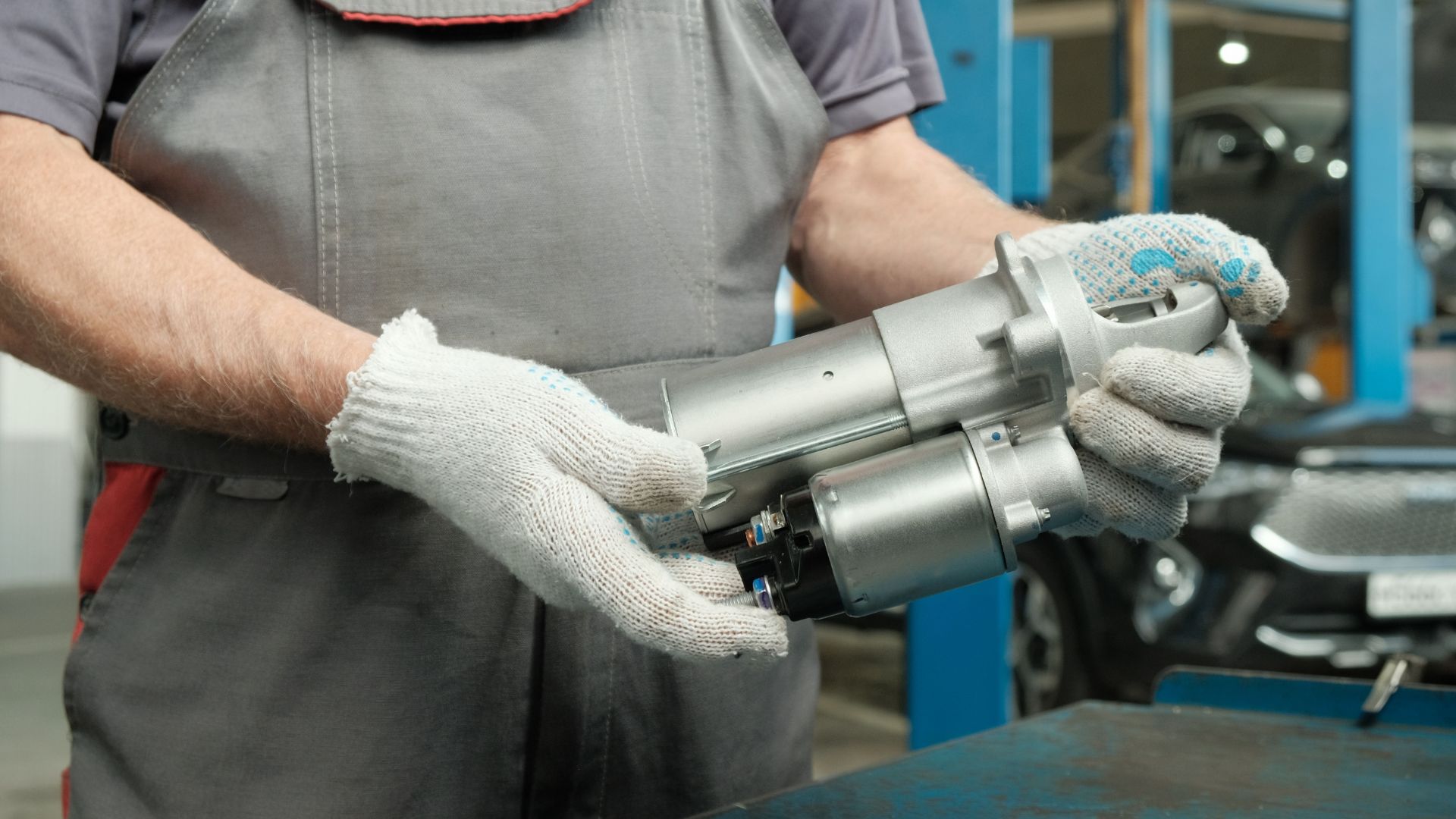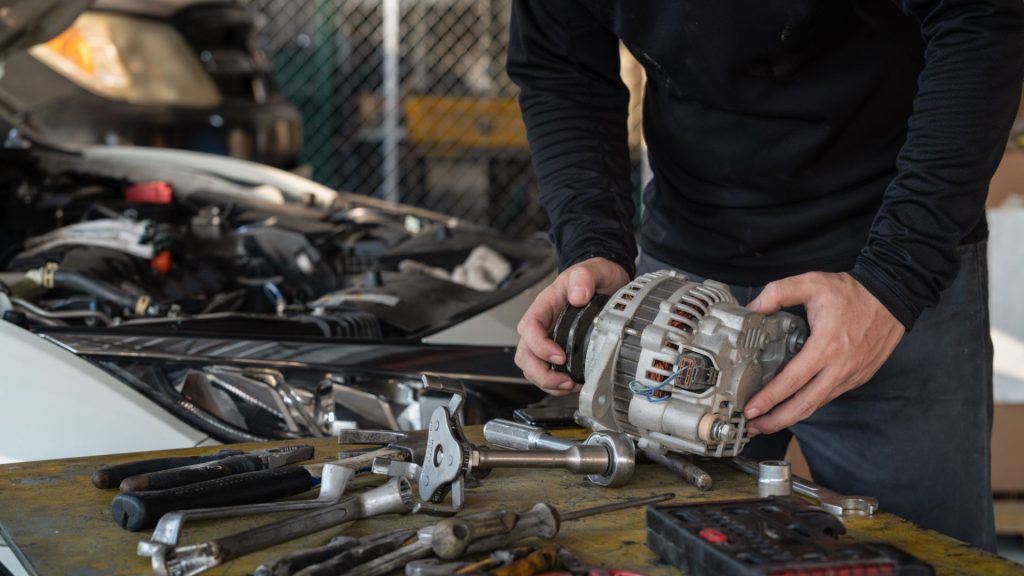Starting system fault — causes and fixes
Explore the causes and solutions for a starting system fault.

As an everyday driver, you probably take the importance of your engine cranking every time you sit behind the wheel in the morning for granted. If you sit in your car and see the starting system fault message on the dashboard, things get a really bad twist.
Sometimes it’s just a warning caused by a draining battery, while sometimes your engine might not start. If this happens to you, don’t panic – our team is there to help you as we’ll go over all the reasons behind this bothersome warning in this guide.
How does your car’s starting system work?
Let’s go over some quick mechanics first to help you understand how your starting system operates. The process begins once you place the key into the lock. The lock is also referred to as the “ignition switch cylinder”, while the electronic ignition switch is placed beyond the lock.
There are several crucial elements of your car’s starting system – the ignition switch, the starter, and your car’s battery. They all work together to crank the engine and get the crankshaft spinning. Once you place the key into the ignition switch cylinder, you’ll have several key positions – lock, accessory, on, and start.
As you turn the key to the “start” position, the ignition switch sends a signal to the computer. The battery then sends a powerful charge to the starter solenoid. The solenoid powers the rotator of the starter motor and engages the pinion to move the flywheel with combined torque.
The flywheel then rotates and gives that initial spin to the engine’s crankshaft. Once you let go of the key in the “start” position, the ignition switch cuts the power supply from the battery to the starter solenoid. It results in the pinion retracting, and the starter motor stops working.
So, all three elements of the starting system serve a crucial role, and if you have a bad starter or malfunctioning ignition switch, your car won’t start. It’s therefore worth inspecting the ignition switch and the battery as well, instead of just blaming it all on the starter motor.
Problems that cause starting system faults

There are numerous reasons behind a problematic starting system in your car. Problems with the three main starting system elements could trigger the “starting system fault” message on the dashboard. However, several other causes might give you a difficult time starting your car.
Here are some of the main reasons behind the problematic starting system:
- Draining battery
- Damaged ignition switch or ignition cylinder
- Starter problems
- Bad alternator
- Spark plugs problems
If it’s your battery causing the problem, you should also notice the battery discharge warning on the dashboard. The battery doesn’t need much power to charge the starter motor, thanks to the starter solenoid which is an electromotor on top of the starter.
It powers the rotator and triggers the starting action, which saves the battery from having to provide a much more powerful charge to power these elements directly. However, it still has to provide some charge to the solenoid, and if it’s drained or can’t keep the charge – it will trigger the starting system fault.
Ignition switch damage
If you have a failed ignition switch, it can be a bit more difficult to diagnose and fix. There are two common problems with the ignition switch that might result in a starting system fault. First, there’s a possible issue with the “start” position of the ignition cylinder.
Behind the lock, there’s a series of springs for each position, and if you wiggle your key aggressively, you might damage the spring. This mostly happens when drivers try to unlock the steering wheel, and it’s a serious problem. If the spring gets damaged, the electric switch won’t be able to send a signal to the battery.
So, the starter motor won’t engage, and the other problem includes bad electrical wiring of the switch. It can also just be a blown ignition switch fuse, and these electrical issues could cause the starting system to fail.
Damaged starter solenoid
If your starter’s solenoid gets damaged, you’ll just hear a clicking sound when trying to start your engine. The solenoid mostly gets damaged if you constantly hold the key for too long in the “start” position. It will prevent it from cutting power to the starter motor, and the motor will spin longer than it should.
Other problems with the starter could also result in a starting system fault message being displayed on your dashboard. If the gears get damaged, they won’t be able to move the flywheel properly. Sometimes, even loose or corroded wires can trigger starter motor problems, so it’s also worth checking the electrical connections.
Bad alternator issues
While an alternator isn’t a part of your car’s starting system, it can affect the battery and therefore disrupt the starting system functionality. The starter provides an electrical charge to the battery every time you start your car.
It keeps all your electrical features working this way, and if it fails, all the electrical systems including the ignition switch and the starter will draw power only from the battery. Soon after your alternator wears off, the battery will lose all its charge, and you won’t be able to start your car.
It’s possible to jumpstart a car with a bad alternator, but if you don’t replace it, you just risk not being able to start your car again. In a sense, your car’s battery, starter, and alternator are all essential to crank your car’s engine.
Dirty or worn spark plugs
Spark plugs produce the necessary flame needed for proper combustion, and if your car’s fuel filter isn’t working, they can get dirty. They also wear off over time, so if you don’t replace them, you might have trouble starting your car.
If it takes too long to crank your engine, it’s either due to bad spark plugs or a starter motor on its way out. So, it’s also worth checking the spark plugs, since at least you’ll know that the problem lies in a bad start if they work properly.
Our take
If you notice a starting system fault message on the dashboard, it’s important to check the battery, starter solenoid, and ignition switch. These are the most common reasons behind the system’s failure, while it can also sometimes be a matter of a bad alternator or even spark plugs.
Hopefully, this guide will shed some light on the possible reasons behind the starting system fault, so you can fix the issue without wasting time on setting a diagnosis.
What causes starting system failure?
Problems with the ignition switch or cylinder, dead battery, or damaged starter could cause a starting system failure.
What does it mean when my car says starting system fault?
When your car says starting system fault, it means that there’s a problem with one of the components of the starting system. In this case, it’s worth checking the ignition switch, starter solenoid, and the battery’s capacity.
What are 2 symptoms that would indicate a faulty starter solenoid?
Your starter engaging but doesn’t stop and a clicking noise when trying to turn on the car are the 2 symptoms that indicate a faulty starter solenoid.
How to avoid starting system failure?
You can avoid starting system failure by checking your battery terminals, measuring the capacity, and checking the electrical connections and fuses of the starter motor and the ignition switch.